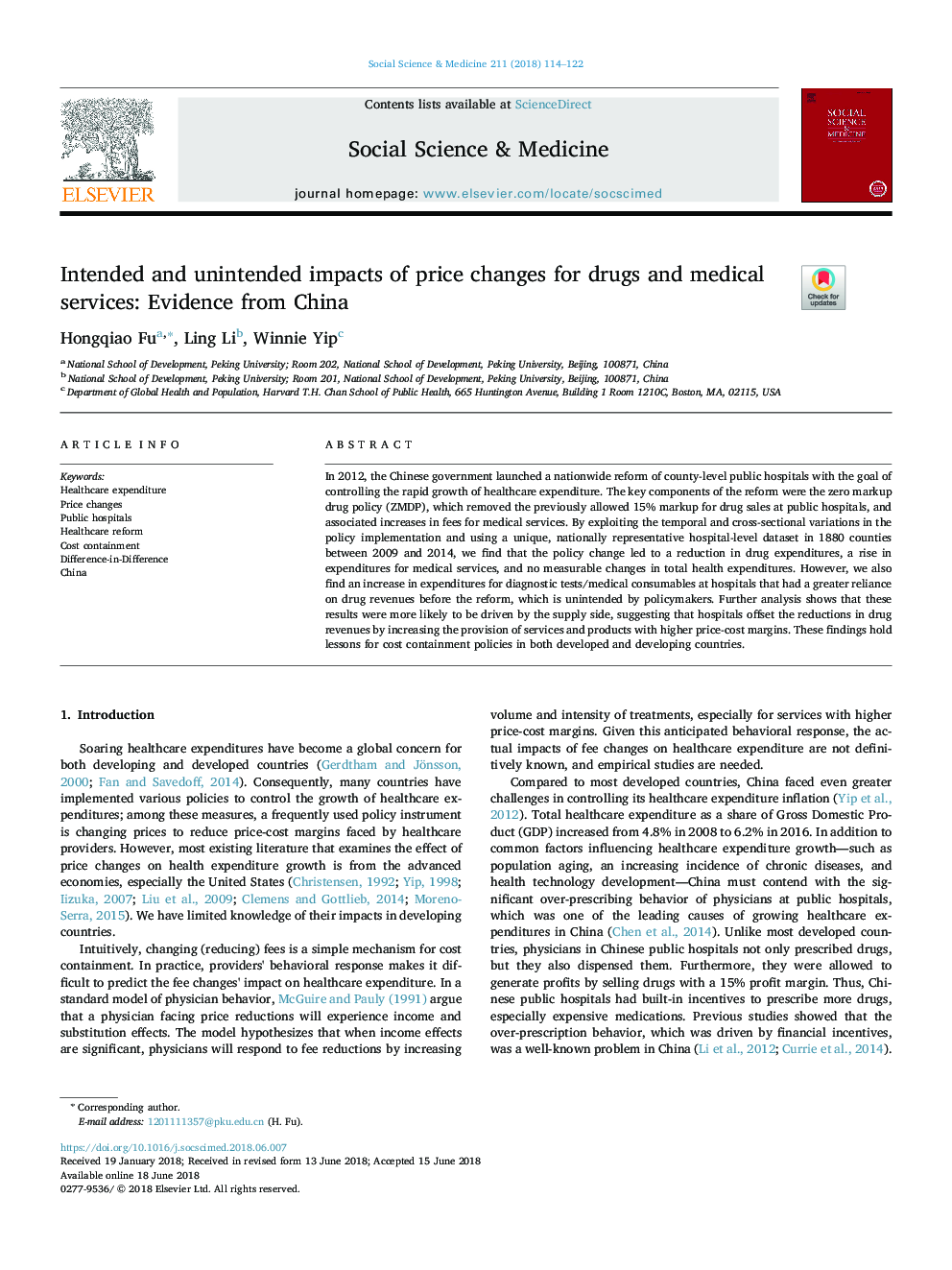| Article ID | Journal | Published Year | Pages | File Type |
|---|---|---|---|---|
| 7327400 | Social Science & Medicine | 2018 | 9 Pages |
Abstract
In 2012, the Chinese government launched a nationwide reform of county-level public hospitals with the goal of controlling the rapid growth of healthcare expenditure. The key components of the reform were the zero markup drug policy (ZMDP), which removed the previously allowed 15% markup for drug sales at public hospitals, and associated increases in fees for medical services. By exploiting the temporal and cross-sectional variations in the policy implementation and using a unique, nationally representative hospital-level dataset in 1880 counties between 2009 and 2014, we find that the policy change led to a reduction in drug expenditures, a rise in expenditures for medical services, and no measurable changes in total health expenditures. However, we also find an increase in expenditures for diagnostic tests/medical consumables at hospitals that had a greater reliance on drug revenues before the reform, which is unintended by policymakers. Further analysis shows that these results were more likely to be driven by the supply side, suggesting that hospitals offset the reductions in drug revenues by increasing the provision of services and products with higher price-cost margins. These findings hold lessons for cost containment policies in both developed and developing countries.
Keywords
Related Topics
Health Sciences
Medicine and Dentistry
Public Health and Health Policy
Authors
Hongqiao Fu, Ling Li, Winnie Yip,
